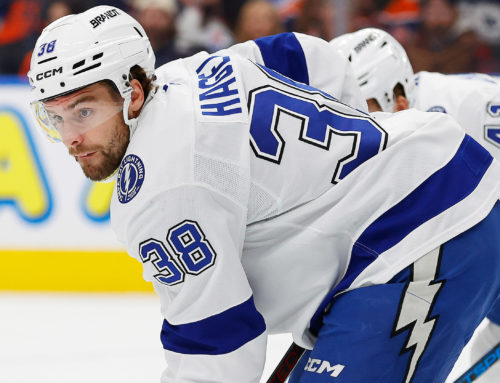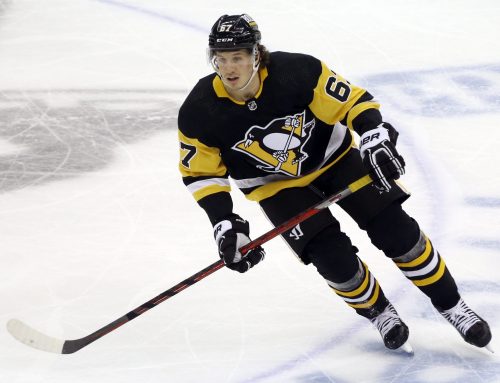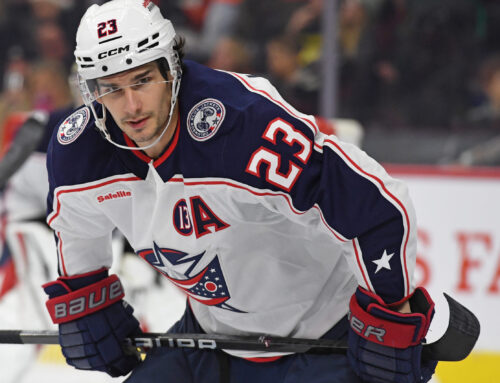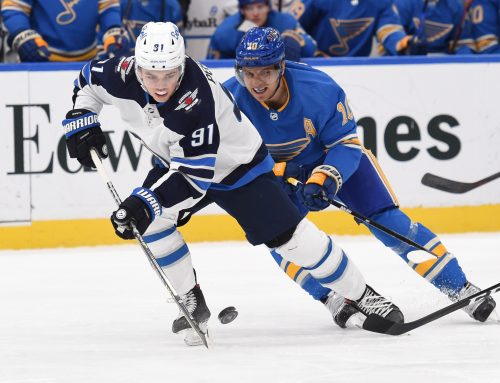It could be just my leagues, but it seems like this season I am seeing more people cut bait with established players early on. Players who are cold for sure, but who we had some expectations of going into the season. For this week we are going to spend some time on cold players and see whether or not those managers had the right idea.
To get our data for this week we are using a Big Board report run as of Thursday morning (the 27th) so it doesn't include Thursday night's action. We will be using a pretty blunt measurement of points per game to see where our players are currently performing. Clearly other categories matter in a lot of leagues, but typically the biggest impact comes from points, so that is where we are going to start. For comparison we are going to use Dobber's preseason guide. Again, the version used was downloaded on the 27th, so will have the most up to date numbers Dobber has put together. Basically, we are going to look at the players with the biggest gap between their projected and actual performances thus far, and then dig into those numbers to see whether or not managers of those players should be panicking or should expect a rebound.
Most of these players are not actually players we should be expecting to hit the waiver wire, but some (like Jordan Kyrou) have seen a drop in roster percentages lately, so it is worth taking a look at.
No cold streaks list could start anywhere other than Roman Josi. I don't think anyone was expecting a repeat 96-point pace, but one point in seven games is certainly not the fall off folks were expecting when they drafted him – especially as maybe the second D off the board. He is still the top D man in Nashville though (his overall and power-play time on ice are consistent with last year, actually exceeding those numbers by a little) and a 12-point full-season pace is not sustainable. Josi hasn't scored yet on 31 shots, and given his average shooting percentage should have 2-3. He also is getting some dramatically poor variance. His five-on-five IPP is 14.3 percent – meaning he has only pointed on 14 percent of the goals scored while he is on the ice. He also doesn't have a power-play point yet – so a zero percent IPP on the power-play. Interestingly all of his assists (so all of his points since he has no goals) have been secondary. His five-on-five team shooting percentage is low as well. Clearly (and obviously) we expect Josi to be doing a lot better going forward. A concern is definitely the power-play. Last season Josi put up an incredible 37 points on a power play that was clicking over 24 percent. In prior years the power-play had been below average and Josi was pacing to closer to 20 points over a full season. So far that power play is clicking below seven percent. Sure, seven percent is unsustainably bad for now, but if they struggle to return to the heights of last season (which seems very likely), Josi will suffer accordingly.
Sam Reinhart is one of several players on this list who fall into the category of "new situation" and maybe our sample size just isn't big enough for all involved to have made the appropriate adjustments. On the one hand, Reinhart is seeing top like and power-play play in Florida (and career high ice times in both categories). On the other, Florida went through some dramatic changes in the off season on the ice (plus just lost Aaron Ekblad) and are dealing with a new coach as well. Like with Josi, Reinhart doesn't have a goal and has only one assist. He also has very low underling numbers with a 14 percent IPP, and a 100 percent secondary assist rate. Assuming that Florida's lines aren't dramatically shaken up there really isn't a reason to expect Reinhart's struggles to continue. He is shooting, has great linemates, and great time on ice numbers.
Let's move right into Aleksander Barkov since it is essentially the same story. No goals, but career high ice time, and power-play time. Very low IPP. Given all of the changes it is certainly possible he doesn't reach the 108-point pace from 2021-22, but there is nothing to indicate his 90-100 point paces aren't still within reach.
Jordan Kyrou broke out to the tune of 75 points in 74 games last season. So far he has put up one goal in five games. Outside of that everything is looking good though. He is still getting even strength time with Vladimir Tarasenko and Robert Thomas, and seeing what seems to be top power-play time. He is shooting at the highest rate of his career and seeing career high time on ice and power-play time. His overall power-play time is still just above two minutes a game, as St. Louis still seems to be distributing minutes more evenly than most, but the situation is pretty similar (if not slightly better) than last year. A big part of his breakout last season was 19 power-play points so watching that power-play will give a better idea of what to expect going forward.
Timo Meier also exploded last season, putting up 76 points in 77 games. The shift came from a big increase in overall time on ice and time on the top power play. These things resulted in a huge growth to almost five shots per game. There was some favorable luck helping to push the point pace, but nothing suggesting that a similar pace wasn't possible for this season. His current two points in nine games. Like with these other players though it doesn't seem to be an ice time, or a shooting problem as those are very much in place. There is a bit of a concern about San Jose's general ability to score goals as they have put up two or fewer in seven of their nine games. As a team they do deserve a little better, but they still rank at the bottom of the league in the quality of shots and chances they are managing. If that doesn't improve, it will be a bit harder for Meier to repeat his point-per-game pace.
J.T. Miller is a little bit concerning. He has five points in his seven games when he was projected for well over a point per game. Vancouver, as a whole, is a mess. They did this last year too, but a new coach managed to pull them out of the funk. Even through most of that though Miller was fine. This season so far Miller's points have predominantly come from goals, but he is actually shooting at a lower rate than in previous years. His almost 30 percent shooting percentage is definitely too high. He is averaging over four minutes of power-play time per game which is great, but his overall ice time is still down by almost a minute. Most of his underlying numbers (IPP etc) don't seem to like him to get in on more goals, or for there to be more goals scored when he is on the ice (at least at five on five). There is a world where the goals slow down, but the assists pick up a bit to sort of even out, but that still leaves him with a 65–70-point pace at best. It looks like something really has to change in Vancouver for Miller to get to or break a point per game again.
That is all for this week. Do your part to support organizations working to make hockey for everyone.





 FLA
FLA TOR
TOR CAR
CAR WPG
WPG DAL
DAL EDM
EDM BUF
BUF WSH
WSH VAN
VAN
